In honour of International Women’s Day this week and UK Mother’s Day on the 10th March, we are celebrating some fierce medieval mothers on the blog. As always, if you enjoy this post, please consider liking or sharing the article, leaving a comment, or subscribing for free to join the community. By referring the Substack to your friends, you can also earn benefits for any sign ups using your referral link. More on that here.
Being a woman at the top in the medieval period was rough. Your principal duties were to remain quiet and supportive while the men around you made most of the decisions and to repeatedly risk your life to bring their children into the world. Worse still, sometimes those kids grew up to become insufferable little tyrants (or idiots) who you had to spend the rest of your days wrangling behind the scenes so that they didn’t get themselves killed. Serving your kingdom as the epitome of religious devotion, a backdoor political mastermind, or as a one-on-one leadership instructor could be risky, tumultuous, and exhausting.
If you thought Kris Jenner was the mum-manager to end all momagers, today we are discussing some seriously badass ladies who make up some of the most elite momagers1 in history. Celebrating their extraordinary achievements individually as leaders and politicians as well as their ability to tee up their kids for a successful career, here are some medieval women you should know about. Let’s get into it!
Empress Matilda (1102-1167)
Imagine having lived your youth as an influential empress on the European continent - dealing with royal petitioners, organising royal grants and regularly standing in for the emperor on ceremonial occasions, only to have your upstart cousin, who was saved from certain death by a well-timed bout of diarrhoea,2 nick a throne promised to you when your philandering Dad finally snuffed it.
Unbelievable.
As the eldest surviving legitimate child of King Henry I of England, Matilda’s story is one of being consistently underestimated by the men around her and eventually placing the interests of her son above her own.
Matilda’s father, Henry I, was the youngest son of William the Conqueror and as the ruling head of a young(ish) royal house in England and Normandy, he had to bat away questions regarding its legitimacy with alarming frequency. Seeing an opportunity to cement the monarchy’s position on the European stage, Henry betrothed Matilda to the powerful Holy Roman Emperor, Henry V, who had been seeking an alliance with the new English royal family for some time.
Matilda’s official engagement to Henry took place in Utrecht during the Easter celebrations of 1110 when she was (get your ick alarms ready)…8 years old. Henry was at least 24.
Having been educated for four years in German manners, culture and politics in relative seclusion by the Archbishop of Trier, Matilda finally married Henry in 1114 and began her official duties at court as Queen (or Empress)3 of the Holy Roman Empire. There is considerable evidence from contemporary chroniclers that Matilda was deeply involved in the day to day business of government. In 1118, when he had to return to the German provinces to quash a rebellion, Henry named Matilda as his regent in the Italian provinces, exhibiting an obvious faith in her political judgement and capabilities.

When the emperor died in 1125, Matilda returned to Normandy as a childless widow in her early twenties with significant experience of royal administration behind her.
Meanwhile, back in England, since 1120, King Henry I had been in a bit of a panic. His only legitimate son, William Adelin, had died in a catastrophic shipwreck in the English channel leaving Henry without a suitable male heir.4 Intent on rectifying this situation, in 1121 he married Adeliza of Louvain as his second wife and set about trying to make new legitimate heirs….to no avail.
When it became clear that this wasn’t going to work and that perhaps all that time he’d spent with mistresses in his early life might have been a bad shout, Henry convened the nobles of England at Westminster during the Christmas of 1126 and ordered them to recognise Matilda as his legitimate heir. Begrudgingly, they did.
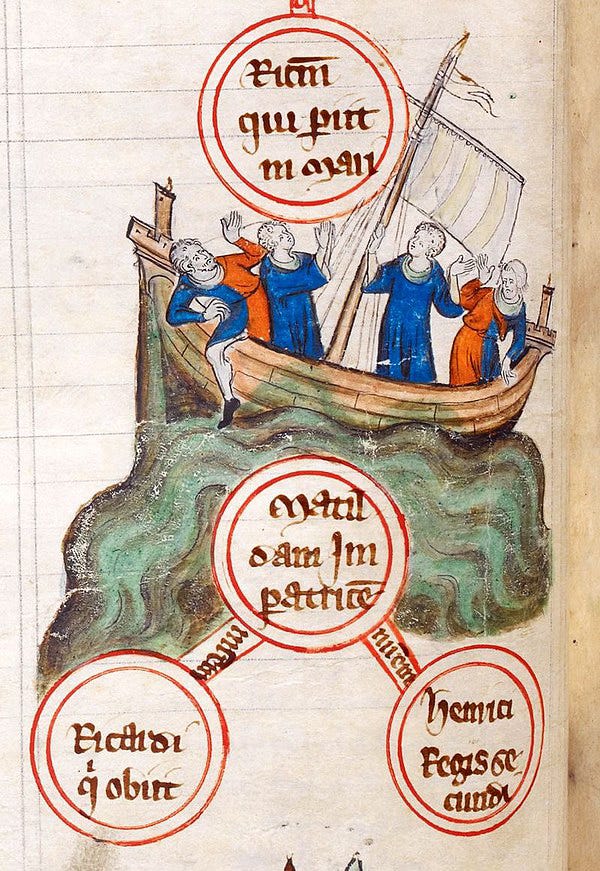
Henry I died in 1135. By this time, Matilda had been convinced to remarry with a man she didn’t really like - partly because when they married, she was 25 and (sound the ick alarm again)… he was 13. His name was Geoffrey of Anjou (also called Geoffrey Plantagenet), a powerful count with important lands in France, with whom Matilda had two male children, including an elder son also called Henry.
Though relations with her father had deteriorated in the years immediately prior to his death, most agree that Henry I had never formally replaced Matilda and her line as his named heirs. As Matilda made her way toward England to claim her birthright and be officially crowned, her cousin, Stephen of Blois, who had been conveniently based in nearby Boulogne, raced to England and, spurred on by a nobility who could not fathom the idea of bending the knee to a woman, claimed the throne for himself. He was crowned King Stephen I in December, 1135.
Cue a civil war.
Matilda refused to take this usurpation lying down and, despite lacking widespread support from sizeable portions of the elite, she invaded England in 1139 with the backing of her husband, Geoffrey Plantagenet, and her illegitimate half-brother, Robert of Gloucester. Due to the breakdown in the social and political order that ensued during this decade-long civil conflict, the wars of this period became known as the ‘Anarchy’, wreaking unspeakable death and destruction across the country.5 Eventually conceding that she was unable to enforce her rightful claim to the throne without catastrophic expenditure of men and resources, in 1153, Matilda and her now 20 year old son, Henry, opened peace negotiations with King Stephen that culminated in an agreement that would see Henry named as Stephen’s adopted son and rightful heir (much to the chagrin of Stephen’s actual kids by the way…).
Matilda’s refusal to back down and her tenacity in asserting the rightful claim of her son meant that in 1154, crowned as King Henry II of England, he became the founding monarch of the Plantagenet dynasty: a dynasty that only came to an end in 1485 with the death of Richard III.
I want my Mummy rating: 4/5 - Politicked like a boss in Europe and led a very strong effort to take the throne that she was rightfully promised. Successfully executed a solid Plan B in setting up little Henry for the crown and establishing a long royal dynasty.
Zumurrud Khatun (d. 1140s)
As is the case for a lot of medieval women, we don’t know nearly as much about Zumurrud Khatun as we'd like to. What we do know, though, is both memorable and impressive.
We can’t know for sure where Zumurrud was born or very much about her family, but it seems that somehow she ended up married to the Turkic ruler (atabeg) of Damascus in modern day Syria, Taj al-Muluk Buri, and as the mother of his immediate heirs.
In the early 12th century, in the aftermath of the somewhat surprising success of the First Crusade, Zumurrud’s husband, the atabeg, spent a lot of time getting involved in the efforts to expel the Christian invaders from the region. Part of the reason that the fragmented and unexpected crusade had succeeded in the first place was that the regional islamic powers were absolutely not all on the same page and had failed to come together quickly enough to respond to the threat. There were deep political, cultural and religious divisions amongst the many factions, some of which frequently resulted in violent conflicts.

Without getting too much into it (it’s a complicated story of plots, battles and literal backstabbings) during this period Taj al-Muluk Buri had made an enemy of the Nizari Isma'ili Order of the Assassins.6 After years of back and forth beef, in May 1131, two Assassins hidden amongst the atabeg’s personal bodyguard attempted to kill him, leaving him with grievous wounds that led to his slow decline and death a year later.
It's at this point that Zumurrud begins to creep into the limelight. Her eldest son and the atabeg’s successor, Shams al-Mulk Isma’il, turned out to be rather a difficult character and a bit of a shitty atabeg, known for being greedy, violent and unpredictable. It was reportedly due to this cruel and tyrannical behaviour that Isma’il found himself regularly plagued by conspiracies and plots to remove him from the throne, to which he always responded with the utmost brutality. In 1135, after the revelation of a particularly large plot to kill him which led to Isma’il starving his half-brother, Sawinj, to death in prison out of paranoia, fearing for his life he planned to flee the city of Damascus and hastily sent envoys to his father’s old enemy, Imad ad-Din Zengi begging for assistance.7
For Zumurrud, the idea of her city of Damascus being handed over to an old enemy for the sake of her tyrannical first born was a little too much. Chronicles of the time suggest that her relationship with her eldest wasn’t good, and it is possible that as the wife of Zengi’s old enemy, she feared being killed, humiliated, or being subjected to sexual violence by being forced into Zengi’s harem.8
When approached by senior army figures and court nobles about her eldest son’s machinations, she responded by ordering some mamluk soldiers loyal to her cause to assassinate him. As his body was thrown out the window and dragged through the streets, her intervention to save Damascus was allegedly greeted with cheers from the crowds in the city.9
With her eldest son dead, Zumurrud was named the Regent of Damascus and her second son Shihab al-Din Mahmud acceded to the throne. Ruling the city-state as a team, the pair even received the oath of loyalty from the Damascene elite in a joint ceremony which was almost unheard of for a woman in medieval islamic societies. In a sign that her political acumen was widely known throughout the region, the Caliph of Baghdad (a kind of regional overlord) expressed no opposition to this and some of the aristocratic elites were recorded as bringing protests and petitions directly to her, rather than to her son.
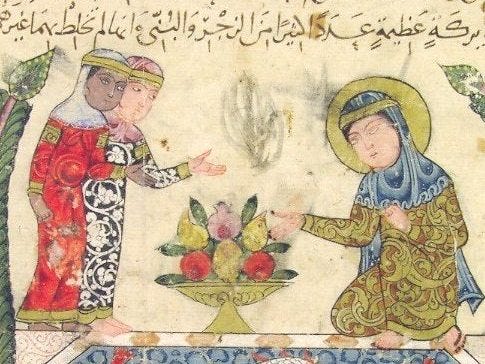

In a final dramatic curveball, in 1138, our old friend Zengi, impressed by Zumurrud’s rulership, sought to make a political alliance with her through marriage. Far from becoming the brutalised concubine she had feared being three years earlier, she accepted his proposal, became his wife, abandoned her regency, and moved to Aleppo to rule at his side.
Sadly, without his Mum to keep an eye on things, the situation took a turn in 1139 for Shahib al-Din Mahmud and he was promptly killed by his political rivals. Furious at his death, Zumurrud supported her new spouse, Zengi, in besieging and capturing the city, punishing those who had conspired against her boy.
Full circle moment.
I want my Mummy rating: 3/5 - Her instinct for knowing which way the political winds were blowing seems to have been pretty bang on. She also gets points for making her second son’s accession to the throne so seamless and for avenging his death. She loses a ‘Mum’ point for having killed her eldest though. I think that’s fair.
Tamar ‘the Great’ of Georgia (c. 1160-1213)
Few women took such ownership over a medieval kingdom as Tamar of Georgia. As the daughter of King George (Giorgi) III, she was given an on-the-job education in administration and rulership when her father crowned her as his co-ruler in 1178.
This wasn’t completely unheard of in Georgia, or even in other medieval kingdoms throughout Europe. Usually, however, it was a monarch’s eldest son that would be crowned as co-ruler in order to train him up for the succession - daughters being crowned was absolutely out of the question. George’s decision to elevate his daughter in this way suggests that she had always been his preferred candidate for rulership despite the grumbles of the men at court.
When her father died in 1184, Tamar, still a young woman, acceded to the throne as planned, but was met with fierce resistance from the nobility who were put off by her unfortunate and unforgivable unmarried female-ness.

Recognising that without some tough negotiations she might lose her father’s kingdom, Tamar made major concessions to the nobles in an act of diplomatic compromise. Forced to remove some of her father’s unpopular government appointees, she was also pressured into finding a husband by the aristocracy and her powerful auntie; making her one of generations of women subjected to the pressure to marry by their nosy families before their thirtieth birthday.
The successful candidate was an exiled Rus10 prince called Yuri who came with a reputation as a good soldier, useful diplomatic links to the Slavic principalities of the north, and, unfortunately, a bad temper. Finding her unwanted husband a disagreeable sort of person, Tamar successfully managed to organise an annulment in 1187. Taking this predictably poorly, Yuri whipped up discontented local nobles and made scandalous military alliances with Muslim leaders who threatened Georgia’s borders in order to try and seize Tamar’s throne in an armed coup. Tamar defeated his several attempts at overthrowing her and he allegedly ended up drinking himself to death in obscurity having been packed off in exile to Constantinople.
Conveniently, the same year Yuri was sent packing to the East, the catholicos (the most senior churchman in Georgia), Mikel Mirianisdze, died. Mikel, who also served as the prime minister (mtsignobarukhutsei) by default, had been a thorn in Tamar’s side since her father’s death. Instrumental in imposing the conditions she had been forced to accept at the beginning of her reign, he also repeatedly frustrated her policy objectives.
With Yuri out of the way and some of her main detractors at court six-feet-under, Tamar could finally rule as she pleased. She appointed her own candidates to important positions of power in the government and selected a new husband while she was at it. One she actually liked.

In 1191, Tamar married David Soslan, a prince from an Ossetian kingdom to the north, who had been raised at the Georgian court in Tbilisi and, until his death in 1207, only ever claimed the title ‘king-consort’, deriving any political power he had from the authority of his royal wife.
The marriage to David was a huge success. A capable soldier and commander himself, David implemented the sharp end of Tamar’s military strategies and led the Georgian army to key victories against Muslim invaders in 1202 and 1206. As if securing the border’s wasn’t enough, Tamar oversaw a huge expansion of Georgian territory, taking advantage of the decline of the Seljuk Turks and consolidating the nation’s status as a formidable Christian military power.
Aside from her aptitude for empire-building, Tamar was also a skilled diplomat and patron of Georgian culture. When Saladin seized the city of Jerusalem from the crusaders in the Holy Land, in 1187 Tamar successfully negotiated the protection of key Georgian monasteries and a mutual exemption from taxation to secure peace and the free movement of pilgrims between the two states.

During her reign, Georgia entered what many historians still call the ‘Georgian Golden Age’ with Tamar overseeing the construction of extraordinary domed cathedrals, the production of striking manuscript art, and a flourishing of Georgian literary culture.
In recognition of her remarkable achievements, Tamar is referred to in contemporary Georgian chronicles as the ‘King of Kings’ and was afforded the same, if not greater, titles as any previous male ruler of the kingdom.11 When Tamar eventually died in 1213, both of her children with David: her son, George, and her daughter, Rusudan; succeeded her one after the other as the monarchs of Georgia. She remains a hugely popular and romanticised figure of Georgian identity to this day.
I want my Mummy rating: 5/5 - Tamar was a huge overachiever. Not only did she usher in the Golden Age of the Georgian Empire militarily, architecturally and culturally, she paved the way for her son and daughter to rule after her as equally respected monarchs in their own right.
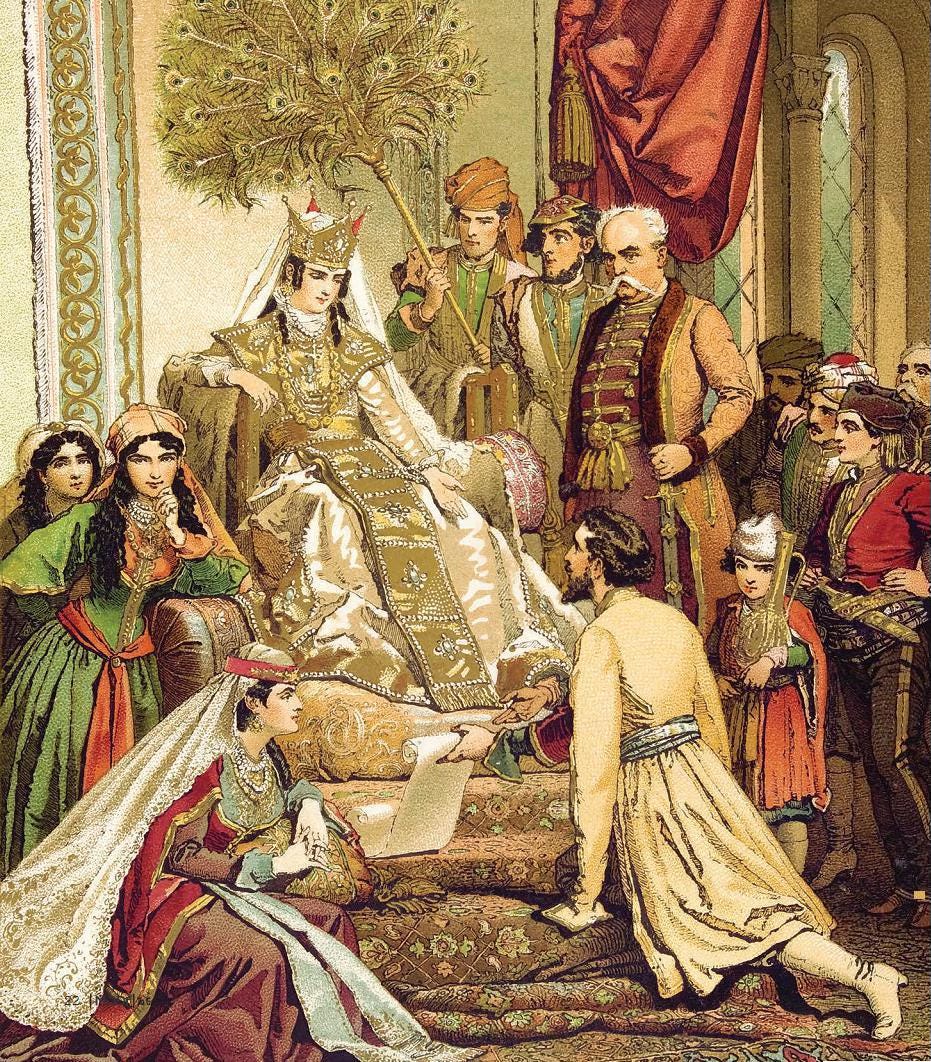
Hö’elün (Dates Unknown)
Probably best known as Genghis Khan’s Mum,12 Hö’elün was a steppe noblewoman of considerable fortitude and wisdom. What little details we have of her life and times mostly come down to us through The Secret History of the Mongols, an epic text charting the ancestry, rise to power and empire-building career of Genghis Khan and his family.13
Prior to becoming a mother, Hö’elün's life had already been pretty eventful. Born into a noble family in the Olkhonud clan of the Onggirat tribe, Hö’elün had been married to a man called Chiledu, an aristocrat of the Merkits. Shortly after her wedding, however, she was abruptly kidnapped by a prominent Mongol warrior named Yesügei, who subsequently married her, positioning her as his primary wife likely due to her prestigious noble lineage.
She and Yesügei had four sons and one daughter together: Temüjin (the future Genghis Khan), Khasar, Khachiun, Temüge and Temülen.
When their eldest child, Temüjin, was approximately 8 years old, Yesügei decided to seek out an advantageous match for his son. Possibly on the advice of Hö’elün, Yesügei chose to travel with his eldest child to the lands of Hö’elün’s own Onggirat tribe, where he was betrothed to Börte, the daughter of the chieftain Dei Sechen. Tradition dictated that Temüjin be left with his future father-in-law for a while to prove his worthiness to marry Börte, so Hö’elün’s noble husband set off home alone.
This is where things take a turn.
Riding back towards his clan’s camp, Yesügei encountered members of the Tatar tribe at a way station and accepted the offer of a meal from them, a well established convention of steppe hospitality. In shocking violation of tradition, the Tatars poisoned him in revenge for an earlier crime he had committed against their people. He swiftly became ill and died.
Recognising that none of Yesügei’s children were old enough to take his place as chieftain, the rest of the clan decided to throw in their lot with another local power, the Tayichiuds. Realising that keeping the noble wife and children of their previous leader around might not be super pleasing to their new overlords, the senior men of Yesügei’s clan opted to abandon Hö’elün and all of their children on the freezing steppe, on the understanding (presumably) that none could possibly survive.
Furious at her clan’s betrayal of her husband’s memory, the Secret History records Hö’elün’s fierce response to realising that the tribe intended to leave her to die:
“Is it because you think that Yesügei Ba’atur has died and that my sons will not get bigger that you somehow made me too late for the blessings of the ancestors, the sacrificial meat, and the sacrificial liquor? Now that I see you, are you going to move camp without calling me to eat?”
She doesn’t exactly sound like a woman who was prepared to quietly accept her fate.
It is after this devastating betrayal that Hö’elün truly initiates supermum mode.
Relying on nothing but hunting and gathering on the open steppe, Hö’elün’s perseverance, organisational skills and her knowledge of the local landscape ensured that her children were able to survive the harsh conditions. The Secret History pays tribute to her remarkable resilience:
“Both womanly and wise,
Finding food for her small boys […]
Flying up and down the Onon’s flood,
Finding wild fruits, crab apples and cherries,
Filled she night and day their famished throats.
Motherly Madame born with gall,
Majestic sons she aimed to raise, […]
Motherly Madame’s boys,
Well raised on wild garlic and onion,
Were brought up to rulership”.
It was during this time of extraordinary hardship that Hö’elün seems to have imparted the crucial lessons in leadership that would shape her eldest son’s future political and military career.
After a disagreement over the spoils of a fishing trip turned violent, Temüjin and his younger sibling, Khasar, ruthlessly murdered their half-brother Bekhter. Despite the fact that Bekhter was the son of one of Hö’elün’s former rivals, her reaction to the murder is a poignant lesson on the importance of sticking together through adversity:
“Murderers! When bursting out from my hot womb, he wielded in his hand a black clot.
Like a hound that devours its own heam, […]
Like a lion that cannot restrain its wrath, […]
Like a cur that hunts with cunning cruelty, you killed.
When we have no friend but our shadow. no whip but our tail, when we cannot put an end to the bitterness of the Tayici’ut brethren and are wondering who will be able to pay them back, you tell me how we can stand it and why you act this way to each other!”
Long after Temüjin completed the unification of the Mongol tribes and accepted the title of Genghis khan in 1206, his mother Hö’elün travelled with him wherever he went, providing an inexhaustible source of wise counsel he appears to have repeatedly returned to for the rest of her life.
I want my Mummy rating: 4/5 - Managed to keep six out of seven children alive abandoned and alone in the Mongolian steppes. Internalising his mother’s lessons of unity and loyalty, one of those children managed to succeed where none had before and unite the steppe tribes into one of the most formidable armies the world has ever known. She loses one point for not having successfully taught that same child the benefits of mercy and moderation.
Eleanor of Aquitaine (1124-1204)
Look, I know it’s obvious but c’mon…like she wasn’t going to be on this list… ? For many casual history fans and medievalists, Eleanor is a popular candidate for the biggest girl boss of the entire Middle Ages having played a role in steering the careers of not one, not two, not three, but FOUR kings.
Born in the early 12th century in the cultured, artsy and sunny court of Aquitaine in the south of modern France, Eleanor was a well-educated heiress with a mega attractive fortune. In 1137, the wealth of Eleanor’s native duchy had caught the eye of the king of France, Louis VII, and they married in Bordeaux that summer. Crucially, as part of the wedding agreement, Aquitaine would remain nominally independent from the Kingdom of France until Eleanor’s future son became both king of France and Duke of Aquitaine. Keeping her individual land holdings separate from her royal husband would come to be rather handy later on.
Not one to be left on the sidelines, in 1147 when Louis VII teamed up with Conrad III of Germany to travel to the Holy Land on the Second Crusade, Eleanor accompanied them and spent many months by her husband’s side as he tried and failed to make a name for himself in the Levant. Though famed for his monkish piety, Louis was a deeply ineffective military leader and the Second Crusade achieved very little.
Malicious rumours began to circulate that Eleanor, encamped alongside other Aquitainian nobles, was having a scandalous affair with her dashing war-hero of an uncle, Raymond of Poitiers. In reality, these rumours probably surfaced because Eleanor had argued ferociously in favour of the military strategies of the more experienced commanders (like her uncle) rather than for Louis’s unrealistic and unambitious plans.
After 15 years of not getting along particularly well and only producing female babies (Marie & Alice), in 1152, fearing that he was destined to die without male heirs, Louis finally granted Eleanor’s request for an annulment.14
A mere eight weeks later, Eleanor was married again, choosing to take a punt on Henry Plantagenet, son of Empress Matilda and Geoffrey Plantagenet of Anjou (remember them?) - bringing all those juicy lands down in Aquitaine with her into the new Plantagenet empire. When Henry was crowned King of England under the terms of Matilda and Stephen’s earlier agreement, Eleanor became the only person to date to have been officially crowned both Queen of France and Queen of England.
Eleanor and Henry II had eight children: William, Henry Jr., Matilda, Richard, Geoffrey, Eleanor Jr., Joan and John. All except William survived to adulthood.
Being a Mum of so many red-blooded medieval boys was a tough gig. As the kids grew older and more resentful about who held which castles and which lands Dad had given them, serious conflicts began to emerge. In 1173, the eldest of the boys, Henry, who had been crowned co-king with his father, rose up in rebellion against his Dad, aggrieved by his lack of functional royal authority.
Rather than give Henry junior a stern telling off, Eleanor actually rose up in rebellion alongside her children, perhaps sick after years of putting up with Henry senior’s awful temper. Sadly, this one didn’t go her way and she was arrested by her husband, spending the next 16 years under house arrest in various castles in England, tragically separated from all of her children.

With Henry’s death in 1189, Eleanor’s future started looking brighter again and she played a decisive role in England during the reign of her son King Richard I, (or Lionheart, if you like).
Richard had very little interest in a) ruling and b) England - preferring to spend his time hanging out in France or dicking about in the Middle East on crusade (which must have given Eleanor dreadful deja vu). On his way back from the Third Crusade, during which he engaged in virtually meaningless military scraps with Saladin and alienated all of his European allies, Richard was taken hostage by Duke Leopold of Austria. Having been charged with holding down the fort in England the entire time Richard had been away glory-hunting, Eleanor now also had the mammoth task of raising Richard’s ransom. The sum was an eye-watering 150,000 marks which translated to two or three times the crown of England’s entire annual income.
Her successful efforts to secure her son’s release are evidenced by the extraordinary amount of travelling she did during this time, convincing English nobles to pay up for the return of their king, as well as the numerous letters she wrote to Pope Celestine III petitioning for her son’s cause.
When Richard finally got himself killed in his post-hostage era at the 1199 siege of Châlus-Chabrol, Eleanor was faced with the unenviable task of supervising the early reign of her youngest son, King John. Known as petty, jealous, unpredictable, unlikeable and just a bit useless… John was the kind of man who was capable of starting an argument with his own shadow. Eleanor had her work cut out for her. Throwing her support behind her unpopular son, the queen to end all queens worked tirelessly to prevent plots against him and convince key nobles to stay onside.
Eleanor died peacefully in 1204 at the ripe old age of 80. John’s reign started to go to shit immediately thereafter.
Medieval queenship? She completed it mate.
I want my Mummy rating: 5/5 - Few did it better. She tolerated Louis for 15 years, helped Henry II become a feared and revered expansionist royal power, held down the fort while Richard was pissing about in the Middle East, and managed to keep John on the throne until after her last breath. A Queen in every possible sense.
Further Reading
The below links are affiliate links. If you choose to purchase a product using the links provided here, I may receive a small commission at no extra cost to you. By using these links you are supporting me and my work, allowing me to continue to get creative and keep posting fresh content for you all. For this, I cannot thank you enough!
On Matilda and The Anarchy: See Catherine Hanley, Matilda: Empress, Queen, Warrior (2020), Robert Bartlett, England Under The Norman And Angevin Kings, 1075-1225 (2003) & Matthew Lewis, Stephen and Matilda's Civil War: Cousins of Anarchy
On Zumurrud Khatun: See Taef El-Azhari, Queens, Eunuchs and Concubines in Islamic History, 661–1257 (Edinburgh University Press, 2019) and Amin Maalouf, The Crusades Through Arab Eyes (1984)
On Tamar of Georgia: William Edward David Allen, A History of the Georgian People: From the Beginning Down to the Russian Conquest in the Nineteenth Century (1971) and Donald Rayfield, Edge of Empires: A History of Georgia (2019).
On Hoelun and Mongol Women: Anne F. Broadbridge, Women and the Making of the Mongol Empire. Cambridge Studies in Islamic Civilization (2018) John Man, Genghis Khan: Life, Death, Resurrection (2005) The Secret History of the Mongols (Penguin, 2023)
On Eleanor of Aquitaine: Matthew Lewis, Henry II and Eleanor of Aquitaine: Founding an Empire (2023) Sara Cockerill, Eleanor of Aquitaine: Queen of France and England, Mother of Empires (2022) Alison Weir, Eleanor Of Aquitaine: By the Wrath of God, Queen of England (2008) & Queens of the Crusades: Eleanor of Aquitaine and her Successors (2021). You can also listen to just how much work Eleanor did to grapple with the men in her life on Dan Jones’ podcast This is History: A Dynasty to Die For, available on all major podcast platforms.
Did you enjoy this article? If so, I have a small favour to ask of you! Please hit the ‘like’ button and leave a comment below on which facts surprised you the most. If you know someone who might find this article interesting - share away! And please subscribe for free with your email so that you never miss a new post. Your likes, comments, subscriptions and shares all help the blog get seen by more eyes which in turn gives me the space, resources and reach to create bigger and better content for you all. Thank you for all your continued support.
The Cambridge Dictionary definition of a momager is “the mother of a famous person who is also their manager”. I think it works here.
Stephen of Blois, who later became King Stephen of England, was due to be on the ill-fated White Ship which, when it sank, killed Matilda’s brother and Henry I’s preferred heir. Stephen was apparently unable to board because he’d pre-gamed too hard at the docks and was having bum trouble. You can read more about that in my article on drunken disasters here, if you are so inclined.
I will happily refer to Matilda as an empress. She did the job of one and stood in for her husband in his role as Emperor on various ceremonial occasions. It is a little bit more complicated than that though, and not all historians refer to her as such. Holy Roman Emperors were elected leader by important nobles and though they immediately became ‘King of the Romans’ on election, technically emperors and empresses had to be crowned personally by the Pope in order to claim the imperial title. Though Henry V had managed to coerce the Pope into crowning him emperor in 1111 (even though they didn’t get on well), things went downhill from there. Subsequent ecclesiastical disputes about investing bishops led to Pope Paschal II excommunicating Henry and the armies of the Holy Roman Empire invading parts of Italy. It was a bold strategy.
Matilda became the legitimate Queen of the Romans upon marrying Henry, but was only ever crowned empress in Rome by a papal envoy, Maurice Bourdain. Where was the Pope himself you ask? Well, during the massive falling out between Henry and Paschal, the royal couple had marched a huge army into Rome to ‘persuade’ him to see their point of view. Paschal had made himself scarce and fled the city.
Check out the White Ship disaster in this article, or see the further reading suggestions for more on that topic.
‘The Anarchy’ is a term that seems to have been invented by Victorian historians who were quite dramatic people. Many modern historians push back a little against the idea that the war caused a total collapse of all political structure, but can mostly all agree that lots of people died, lots of things were destroyed, and that it was an all-round quite miserable time.
Before anyone goes feral in the comments - Yes, the Assassins were perfectly real. Ubisoft’s Assassin’s Creed video game franchise did not make these people up. They are a historically attested Islamic order with a fascinating political history who played at times a very significant role in the events of the Levantine crusades era.
But alas, no, they are not still active, spending their days fighting the shadowy remnants of the Templar Order throughout time and space. Put the Dan Brown books away, use the Historical Discovery mode on the new Assassin’s Creed games to separate fact from fiction and see the further reading. I beg.
Zengi was the Seljuk-Turk atabeg of nearby Aleppo and Mosul and was considered to be a big regional player. He is frequently mentioned as the big scary heathen bad guy in Christian chronicles of the First Crusade where his name is variously spelled as Zangi, Zengui, Zenki, Zanki, and all sorts. Correct spelling of words in languages other than Latin wasn’t really a thing back then…
From what we can reconstruct of Zumurrud’s life, it seems that she never lived in gendered seclusion as part of the royal harem. Having been an active political player at court during the reign of her husband, it is possible that the possible humiliation of being ‘demoted’ to a concubine was a motivating factor.
The near-contemporary author of the Damascus Chronicle of the Crusades proposed an alternative explanation for Zumurrud’s actions. The chronicler accused her of ordering the murder because Isma’il plotted to kill her lover. Make what you will of this, but I’d argue that given that Zumurrud went on to become rather powerful, this is probably an example of a male medieval chronicler trying to ‘monster’ an influential woman by focusing the narrative on sexual misdeeds and ‘selfish cruelty’. His narrative attempts to frame her as a plotter rather than as a patriot.
The Rus principalities were city-states that developed in Eastern Europe in the 10th century, the most famous of which was the state of the Kyivan Rus, based in modern day Ukraine. The early history of these Slavic states is often invoked in the foundation myth of modern Russia by nationalist historians, especially amateur ones like Vladimir Putin, who deny the ‘separateness’ of Ukrainian history and culture. It’s not particularly reflective of historical reality and is a good example of how dangerous a wilful misunderstanding of history can be in the hands of the wrong person.
Though Tamar was the first woman to rule Georgia in her own right, unlike similar queens in Western Europe, she wasn’t given a different, gendered, title that marked her out as an outlier. She was always referred to as the ‘mepe’ or ‘king’, the same as the long line of kings who preceded her.
Genghis Khan’s name is more accurately rendered pronunciation-wise as ‘Chinggis Khan’. I’ve just chosen here to go with the version of the name that he’s more familiar by to English-speaking audiences.
Most of what we know about Hö’elün is derived from this text, which is the oldest material ever written in the Mongolian language. It is an epic tale of the foundation of the Mongol empire in both prose and verse at various points and contains mythical and folkloric elements as well as the chronology of Genghis Khan's conquests. Though we don’t know for sure who authored the text, it is unfailingly favourable towards Hö’elün, leading some historians to theorise that the author may have had ties to her family, or have been one of the many foundlings she raised as her own throughout her life.
Despite the fact that the text contains obvious inventions, it tends to be taken quite seriously as a historical source: one of the very few written texts about the Mongols produced from their own point of view. Rather than gloss over the imperfections of its protagonist, Genghis Khan, it tends to include the uncomfortable details about the mistakes and brutality of his early life. The presence of Hö’elün’s many admonishments and lectures directed toward her son have even led some to suggest that its depiction of an imperfect ruler who made it big was intended to serve as a blueprint for the next generation of Mongol royalty.
A tragic condition of Eleanor’s annulment was that she was never allowed to see her daughters with the King of France ever again.

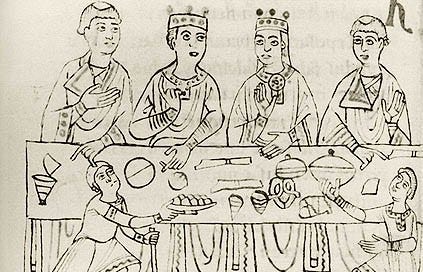



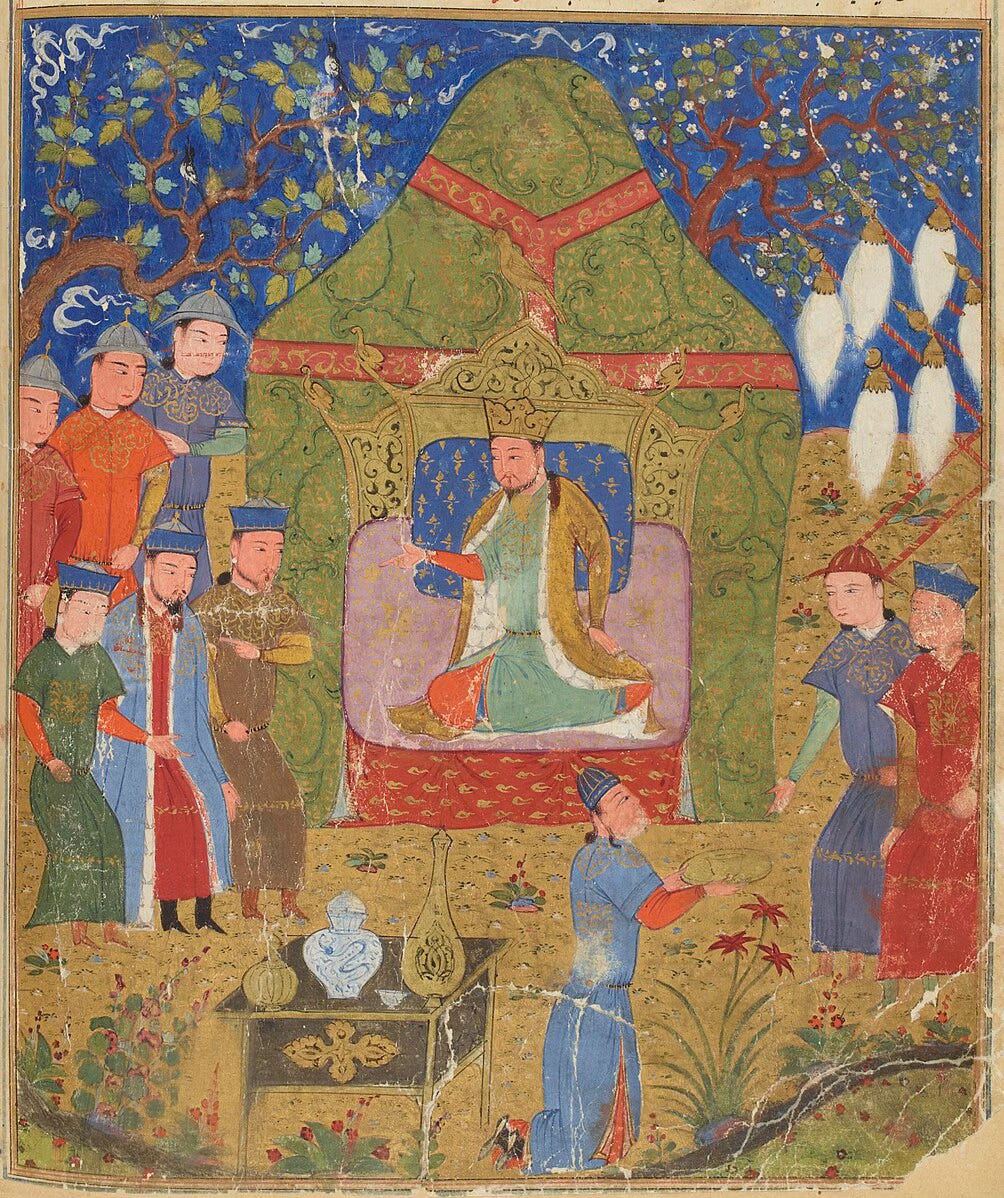

Loved this! Informative AND amusing 👍